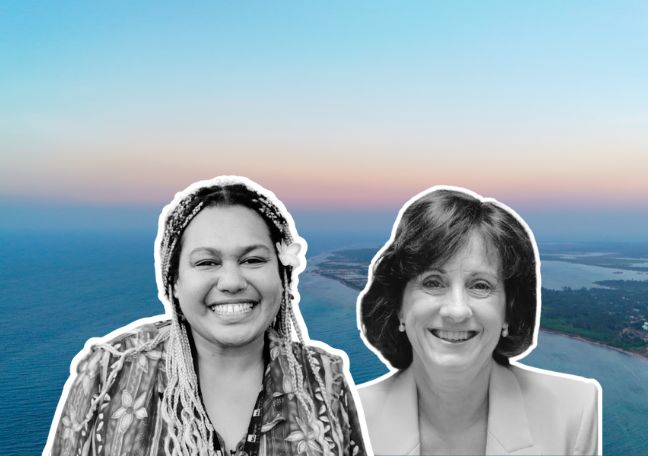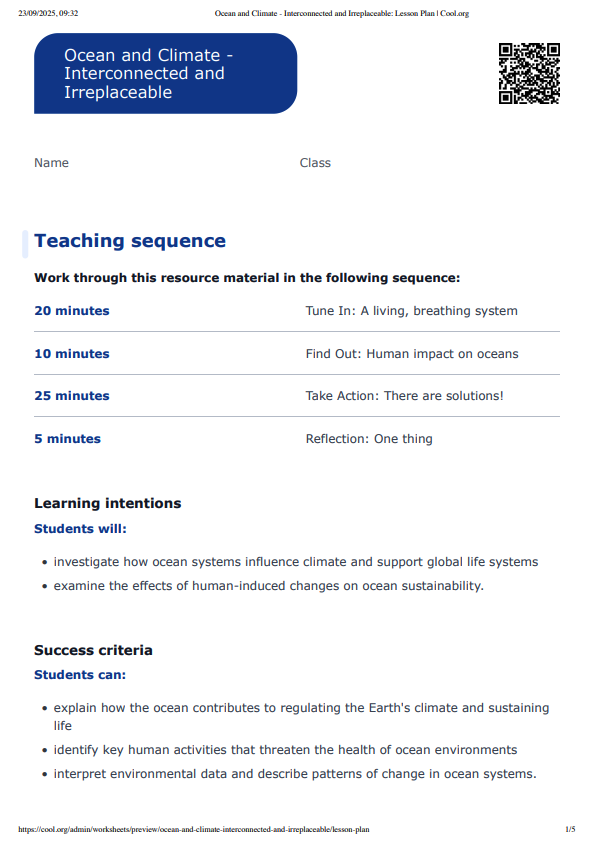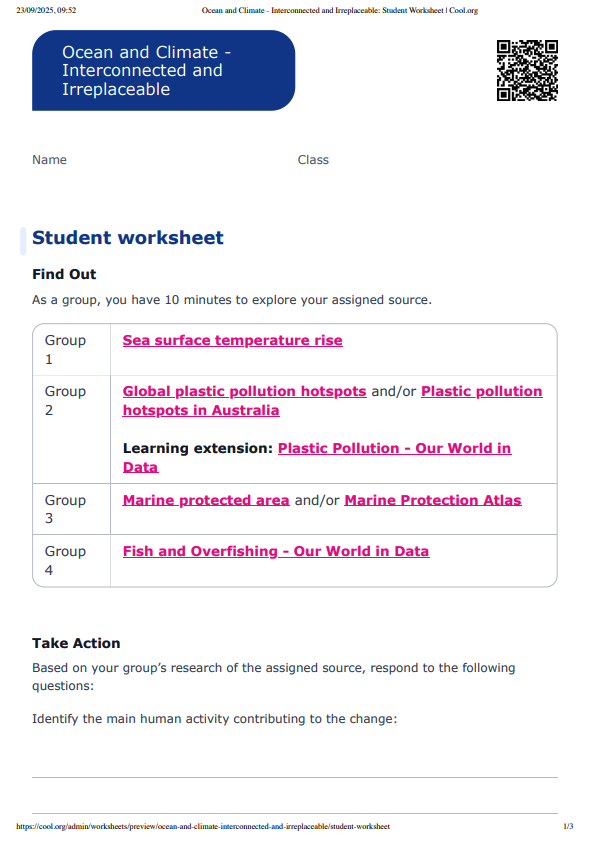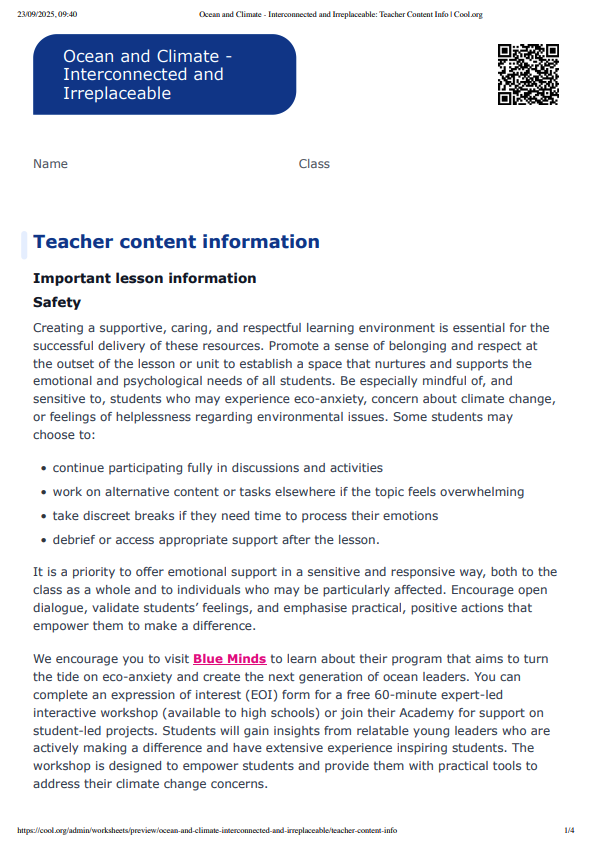Lesson summary
Students will evaluate geographical data and information to make generalisations and predictions, explain patterns and trends, and infer relationships by hearing from First Nations peoples and climate scientists describing the ocean as a living, breathing system of interconnection. They will model ocean interconnectedness and research the cause-and-effect relationships between ocean changes and various human systems.
Learning intentions
Students will:
- investigate how ocean systems influence climate and support global life systems
- examine the effects of human-induced changes on ocean sustainability.
Success criteria
Students can:
- explain how the ocean contributes to regulating the Earth's climate and sustaining life
- identify key human activities that threaten the health of ocean environments
- interpret environmental data and describe patterns of change in ocean systems.
Lesson guides and printables
Lesson details
Skills
This lesson is designed to build students’ competencies in the following skills:
- creative thinking
- critical thinking
- collaboration
- communication
- digital literacy
- global citizenship
Curriculum Mapping
Australian Curriculum (v9.0) content description:
Year 9, Geography
Students learn to:
- evaluate geographical data and information to make generalisations and predictions, explain patterns and trends and infer relationships (AC9HG9S03).
Year 10, Geography
Students learn to:
- evaluate geographical data and information to make generalisations and predictions, explain patterns and trends and infer relationships (AC9HG10S03).
Relevant parts of Year 9 achievement standards: Students interpret and analyse data and information to explain patterns and trends and infer relationships.
Relevant parts of Year 10 achievement standards: Students interpret and analyse data and information to make generalisations and predictions, explain significant patterns and trends, and infer relationships.
NSW Syllabus outcomes:
A student:
- applies and evaluates a range of geographical tools to acquire and process geographical information (GE5-TAP-01).
General capabilities: Critical and Creative Thinking, Digital Literacy, Ethical Understanding, Personal and Social Capability.
Cross-curriculum priority: Aboriginal and Torres Strait Islander Histories and Cultures, Sustainability.
Level of teacher scaffolding: Medium – facilitate discussion, scaffold research, supervise.
UN Sustainable Development Goals
UN SDG 12: Ensure sustainable consumption and production patterns
- Target 12.2: By 2030, achieve the sustainable management and efficient use of natural resources.
- Target 12.5: By 2030, substantially reduce waste generation through prevention, reduction, recycling and reuse.
Resources Required
- Coloured cardboard
- Device capable of displaying audiovisual material
- Scissors
- Sticky notes
- Student devices
- Student Worksheet
- Wool or string (see Teacher Content Information).
Additional Info
Blue Minds Youth Ocean Leadership program aims to turn the tide on eco-anxiety and create the next generation of leaders. They aim to address this by providing free expert-led workshops to high schools, TAFEs and universities. Students will gain insights from relatable young leaders who are actively making a difference and have extensive experience inspiring students. An initiative by Surfers for Climate & The Good Human Factory.
Related Professional Learning
Communicating Climate Change with Confidence and Courage
Quick summary - The course provides a balanced approach to teaching climate solutions, exploring the science, and emphasising both individual and systemic actions while maintaining hope and agency.




Welcome back!
Don't have an account yet?
Log in with:
Create your free Cool.org account.
Many of our resources are free, with an option to upgrade to Cool+ for premium content.
Already have an account?
Sign up with:
By signing up you accept Cool.org's Terms and Conditions(Opens in new tab) and Privacy Policy(Opens in new tab).